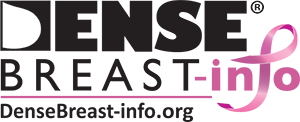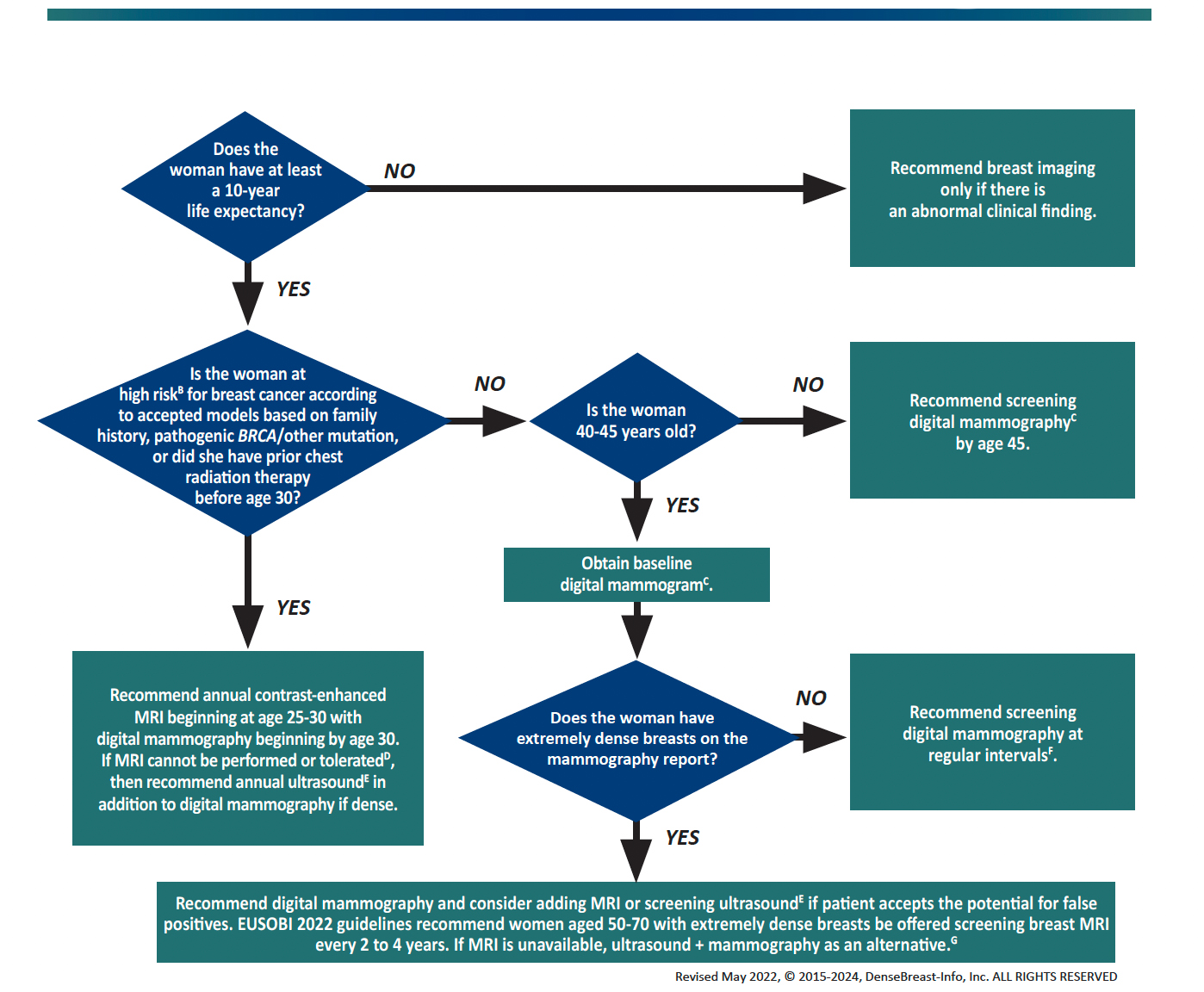European Screening Decision Support ToolA
AThis represents a screening protocol to optimize cancer detection. Countries vary in screening guidelines, available technologies, and informing women of breast density. While breast self examination and clinical breast examination have not been proven to reduce deaths from breast cancer, women should be familiar with their breasts and
promptly report changes to their health provider. For information about cancer detection by modality, see DenseBreast-info.org (Technology tab Table: Summary of Cancer Detection Rates for Commonly Available Breast Screening Tests).
BSee DenseBreast-info.org (Health Professional Tab / Risk Models).
CMammography is the only imaging screening modality that has been studied by multiple randomized controlled trials. Across those trials, mammography has been shown to reduce deaths due to breast cancer. The randomized trials which show a benefit from mammography are those in which mammography increased detection of invasive breast cancers before they spread to lymph nodes. Tomosynthesis has been shown to improve cancer detection slightly in all but extremely dense breasts, and to reduce false positives in all but fatty breasts, and can be performed with synthetic reconstructions instead of digital mammography.
DContrast-enhanced MRI is not recommended in women who are pregnant, have a pacemaker, have a non-MRI compatible metallic implant near vital structures, or who have decreased renal function. If you have screening MRI, there is no added benefit from screening ultrasound.
EIn women with dense breasts, several studies have shown that ultrasound significantly increased breast cancer detection even after 2D and 3D (tomosynthesis) mammography, and that MRI improved cancer detection more than ultrasound, though further research is ongoing. However, no randomized controlled trial examining reduction in breast cancer deaths has ever been performed on any imaging screening modality other than mammography and therefore there are no data directly showing that supplemental screening will or will not decrease mortality from breast cancer. It is expected, however, that other screening tests which increase detection of node-negative invasive breast cancers beyond mammography should further reduce breast cancer mortality.
FFollow country-specific guidelines.
GSee https://link.springer.com/article/10.1007/s00330-022-08617-6
NOTE: This flow chart was developed as an educational tool and reflects the consensus opinion of our medical reviewers based on the best available scientific evidence. Other guidelines may recommend a different start date or screening frequency. This is not intended to be a substitute for medical advice from a physician or to create a standard of care for health care providers.

